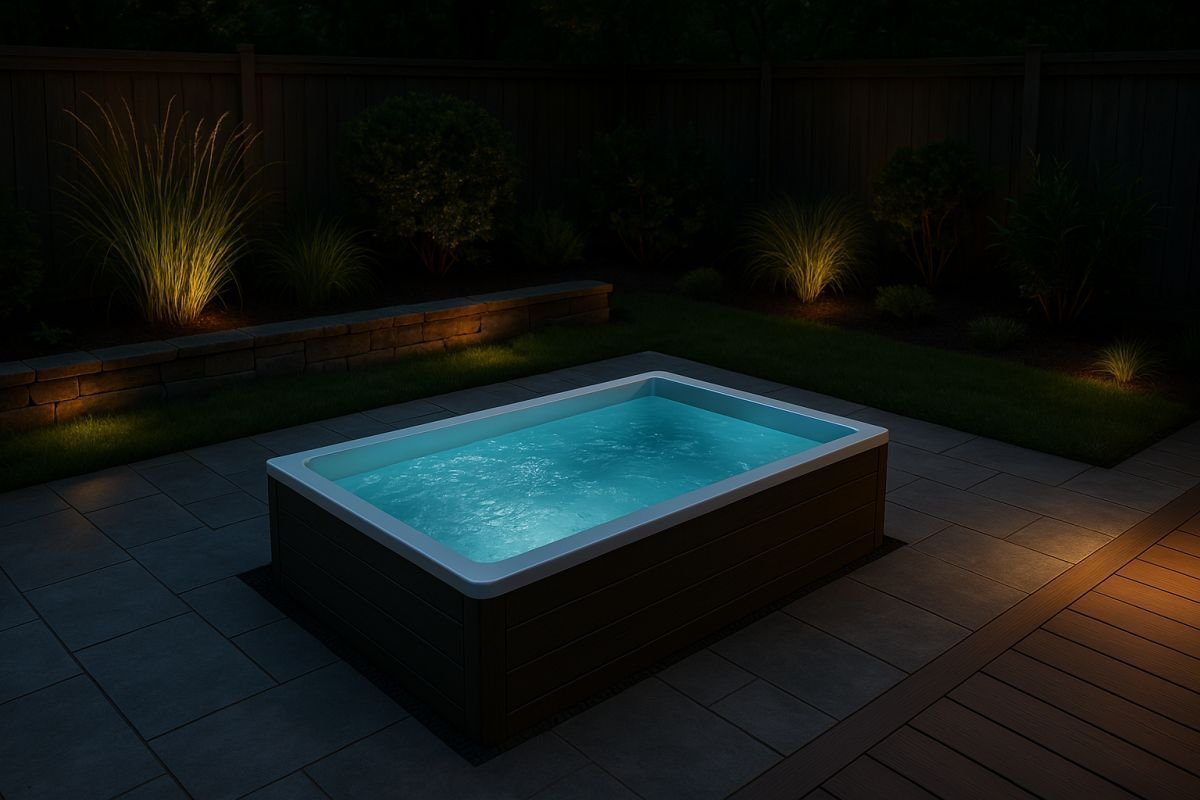Chilling Out: The Benefits and Risks of Cold Plunges Explained
Introduction
In the ever-evolving landscape of wellness trends, cold plunges have surged in popularity, drawing everyone from elite athletes to wellness enthusiasts into their icy embrace. But what’s the real allure behind this chilling ritual? Is cold plunge services near me it merely a fad or is there scientific merit to the practice? As we delve into the depths of cold plunges, we will explore their myriad benefits and potential risks, empowering you with knowledge to make informed decisions about your wellness journey.
Cold plunges—the act of immersing oneself in cold water—have been practiced for centuries across various cultures. From ancient Roman baths to modern-day cryotherapy chambers, the principles remain largely unchanged. This article aims to serve as your comprehensive guide, revealing everything you need to know about cold plunges—from physiological responses and psychological effects to practical tips for incorporating them into your routine.
The Science Behind Cold Water Immersion
Understanding Thermoregulation
At its core, thermoregulation is how our bodies maintain a stable internal temperature despite external changes. When you immerse yourself in cold water, your body goes through a series of physiological changes aimed at preserving heat. Blood vessels constrict, redirecting blood flow to vital organs; this response is known as vasoconstriction.
Physiological Responses to Cold Water
- Increased Heart Rate: Initially, upon entering cold water, your heart rate spikes due to shock.
- Release of Endorphins: Cold exposure triggers the release of endorphins, contributing to feelings of euphoria.
- Metabolic Boost: Your body burns calories attempting to warm itself up after exposure.
Benefits of Enhanced Circulation
Cold plunges can enhance circulation by stimulating blood flow. Improved circulation promotes nutrient delivery and waste removal in cells, thereby enhancing overall health.
Chilling Out: The Benefits and Risks of Cold Plunges Explained
Physical Benefits of Cold Plunges
- Athletes often utilize cold plunges post-exercise to alleviate muscle soreness and expedite recovery.
- Regular exposure may lead to an increase in white blood cell counts.
- Cold immersion can help regulate sleep patterns through temperature regulation.
Mental Benefits of Cold Plunges
- The rush of endorphins following a plunge can significantly elevate mood levels.
- Overcoming the initial shock can cultivate mental fortitude.
- The act encourages present-moment awareness as one focuses on breathing amidst discomfort.
Potential Risks Associated with Cold Plunges
Understanding Hypothermia
While the benefits are enticing, it's critical not to overlook potential risks such as hypothermia—a life-threatening condition arising from prolonged exposure to cold temperatures. Symptoms include:
- Confusion
- Shivering
- Slurred speech
Cardiovascular Concerns
Individuals with pre-existing heart conditions should consult a healthcare professional before engaging in cold plunges due to potential stress on the cardiovascular system.
Practical Tips for Enjoying Cold Plunges Safely
Start Gradually
If you're new to cold plunging, begin with short durations (1-2 minutes) before gradually increasing time spent submerged.
Optimal Temperature Settings
Aim for water temperatures between 50°F (10°C) and 59°F (15°C) for optimal benefits while minimizing risks.
Listen to Your Body's Signals
Pay attention! If you experience extreme discomfort or pain, exit immediately.
The Art of Breathing During a Cold Plunge
Breath control is essential when taking a plunge into icy waters. Focus on deep diaphragmatic breathing rather than rapid chest breathing; this helps mitigate panic and regulate heart rates during initial immersion.
Integrating Cold Plunges Into Your Wellness Routine
Timing Is Key
Consider incorporating cold plunges after workouts or sauna sessions for maximum recovery benefits.
Combine with Other Therapies
Pairing with practices like yoga or meditation can enhance overall relaxation post-plunge.

Cold Plunge Equipment Essentials
1. Home Setup vs Professional Facilities
You may choose between creating your own home setup or visiting professional facilities that offer dedicated plunge pools or cryotherapy chambers.
| Item | Home Setup | Professional Facility | |--------------------|------------|-----------------------| | Cost | Low | High | | Convenience | High | Moderate | | Supervision | None | Yes |
FAQ Section
1. What is a cold plunge?
A cold plunge refers to immersing oneself in cold water typically below 60°F (15°C) for therapeutic purposes.
2. How long should I stay in a cold plunge?
For beginners, start with 1-2 minutes and gradually increase up to 10 minutes as comfort allows.
3. Can anyone do cold plunges?
While many can benefit from them, individuals with certain medical conditions should consult their doctor beforehand.
4. What are some common misconceptions about cold plunging?
Many believe it only offers physical benefits; however, psychological gains like improved mood are significant too!
5. How often should I do cold plunges?
It varies by individual preference but typically ranges from once a week to several times per week depending on goals and tolerance levels.
6. What's the best way to prepare for a plunge?
Warm up first! Engaging in light exercise can ease the transition into colder water without overwhelming your body initially.
Conclusion
As we’ve navigated through the intricate world of cold plunges, it becomes apparent that while there are undeniable benefits—ranging from enhanced recovery times for athletes to improved mental clarity—the risks must also be acknowledged and respected. With appropriate precautions such as gradual acclimatization and listening closely to one's body signals, integrating cold plunges into your wellness regimen could open doors toward achieving an elevated state of well-being both physically and mentally.

Whether you're dipping your toes in for the first time or diving headlong into icy waters—embracing this chilling trend might just be what you've been searching for all along! So go ahead, take that leap—your mind and body will thank you later!